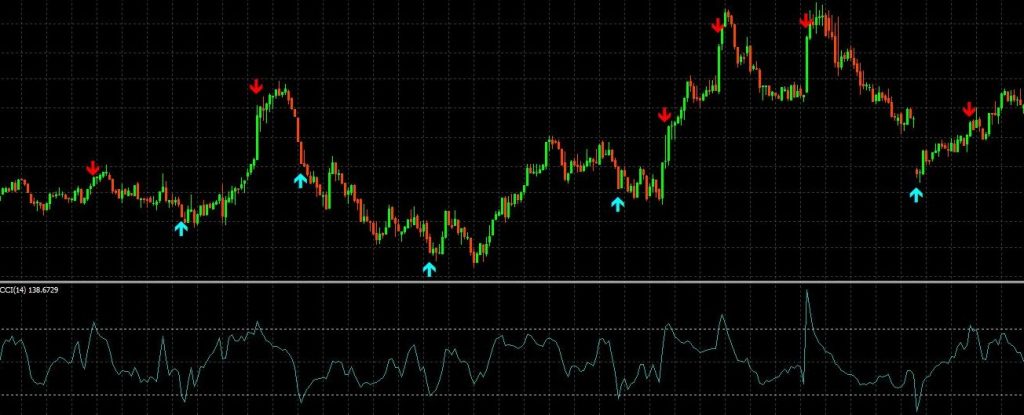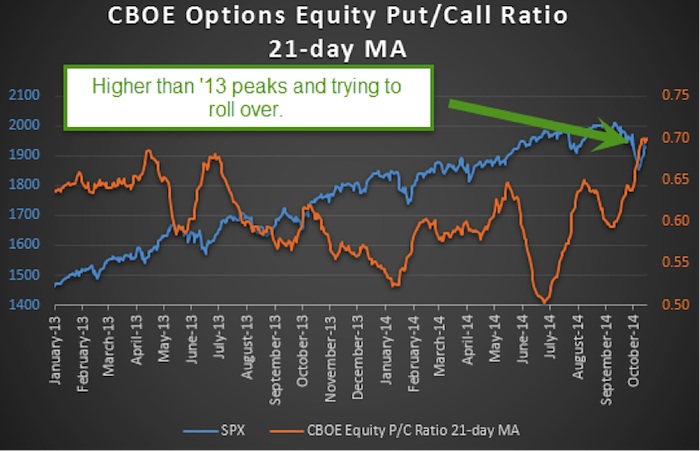Contents:
There is a clear criterion for assigning devices to the trading guide with the target of making certain solely traded instruments are included in capital calculations and that regulatory arbitrage is minimized. This methodology is involved with exposures to rates of interest regardless of the kind of instrument. It can be concerned with the exposure to other danger components corresponding to FX charges and commodities. It is a portfolio method to calculating capital and the methodologies used in FRTB are designed to calculate capital charges. The NII or web curiosity margin depends on the movements of interest rates.
Moreover, the industry’s lack of recent experience with rising and more volatile interest rates, coupled with material levels of market uncertainty, presents challenges for all banks, regardless of size or complexity. Option risk happens when the timing or amount https://1investing.in/ of a bank’s cash flows changes because of a decision by a bank borrower (e.g., a loan customer) or lender (e.g., deposit customer). Basis risk arises when interest rate changes lead to a difference in how a bank’s assets are repriced versus its liabilities.

While nicely-known and broadly utilized, the VaR technique requires sure assumptions that restrict its precision. Investors with a book value perspective tend to address interest rate risk with the tools of asset-liability management—cash matching, gap analysis, earnings simulation, earnings at risk andduration. Those with an economic perspective use some of these—especially gap analysis and duration—but they also use tools that focus on economic value—delta, PV01 and value-at-risk. This analysis measures the difference in cash flows between rate-sensitive assets and liabilities and identifies the “gap” where repricing of instruments could produce risk. While this is a good first step toward measuring earnings at risk, there are glaring shortcomings to a gap analysis. The Federal Reserve’s continuing moves this year to raise interest rates to cool stubborn inflation could help ease some of that pressure on banks, as rates charged on loans and earned on investment securities also increase.
Public and private climate risk analysis and understanding has increased greatly in recent years. Standardising scenarios could ensure some degree of comparability across analyses from different companies. It could ensure companies don’t only stress-test against scenarios designed to be less disruptive for their business model. However, given the degree of uncertainty around future climate outcomes and the pathways of getting there, complete standardisation would do more harm than good. What increasing rates really mean is an increasing system-wide cost of capital.
Suppose an electronics company makes a large offering of five-year bonds. The bonds are structured to provide small payments in the first four years, followed by large balloon payments in the last year. The company assumes that it will be able to cover these balloon payments with new bond issues.
repricing risk in English dictionary
Next, it is over-aggregative, which distribution of assets and liabilities within particular person buckets is not thought-about. In length gap analysis, the duration of belongings and liabilities are matched instead of matching the maturity or repricing dates. The duration gap mannequin considers the change in the market values of assets, liabilities, and off-stability sheet gadgets. The economic value of equity is a cash flow calculation that takes the present value of all asset cash flows and subtracts the present value of all liability cash flows. Unlike earnings at risk and value at risk , a bank uses the economic value of equity to manage its assets and liabilities.
Rate-sensitive liabilities are those liabilities that will mature or reprice in a given time period. In simulation analysis the detailed assessment of potential results of changes in interest rates on earnings and financial values could possibly be carried out. The simulation mannequin is an effective device for understanding the risk publicity in a variety of rate of interest/balance sheet scenarios. As rates of interest go up, for instance, the current worth of pension liabilities tends to fall.
The optimistic or adverse gap is multiplied by the assumed interest rate modifications to derive the EaR. The EaR method estimates how much the earnings may be impacted by an opposed movement in interest rates. Changes within the rate of interest may be estimated on the premise of past trends, forecasting of rates of interest, or other standards. The periodic hole evaluation signifies the interest rate risk exposure of banks over distinct maturities. BCBS addresses IRR within the trading guide beneath the Fundamental Review of the Trading Book 3 Pillar I capital expenses.

From the book-value perspective, a portfolio that has positive duration is liability sensitive. From the economic perspective, duration describes the sensitivity of the portfolio’s market value to parallel shifts in the spot curve . Accordingly, the single notion of duration is perceived in fundamentally different ways.
Repricing Opportunity
IRR within the trading e-book is subject to Pillar I and hence carries a capital charge, whereas Interest Rate Risk within the Banking Book is subject to Pillar 2 and does not carry a regulatory cost. The financial worth of fairness is a cash flow calculation that takes the present worth of all asset money flows and subtracts the present worth of all liability money flows. This is very deliberate; regulators want risk departments and boards to put some effort in to understanding their particular exposures to the risk. If a portfolio has assets repricing earlier than liabilities, it is said to beasset sensitive. This is because near term changes in earnings are going to be driven by interest rate resets on those assets. Similarly, if liabilities reprice earlier, earnings are more exposed to interest rate resets on those liability, and the portfolio is calledliability sensitive.
- This may be achieved by ensuring that the length of the belongings is the same as the period of the liabilities.
- By repricing, the company effectively replaces now-worthless options with those that have value to keep top managers or key employees.
- From a market risk standpoint, the floating rate assets pose little risk—floaters have stable market values.
- The back-end ratio indicates what portion of a person’s monthly income goes toward paying debts.
The analytics can also provide vital insights into potential hedging ratios and hedge timing. The spread between the two-12 months and ten-yr yields is named the quick-end unfold while the other spread is the long-finish unfold. The measure used for interest rate risk at the quick-finish is known as short-end duration or SEDUR; the opposite measure is not unexpectedly lengthy-end period or LEDUR. This price behavior is sensible from a fundamental valuation perspective. These companies are all highly cash-flow generative, which is something that’s often not the case within the tech sector – particularly so amongst smaller entities. Cash flow is now much more important within the current market context than it was before due to the actions of the Fed and the repricing of money in of itself.
Big 5 Cash Valuations
Only by quantifying and repricing risk will the correct price signals be sent out across the economy to channel investments away from polluting activities and into the required clean energy and green technologies. The banking industry’s IRR exposure warrants increased attention both by bank management and by regulators at this time. As always, banks are expected to establish appropriate risk tolerances and develop effective methods to measure, monitor and control exposures to IRR in a manner consistent with the size and complexity of the bank. Banks can measure the impact of a variety of stress scenarios including interest rate shocks and changes in the shape of the yield curve. Bank management should understand assumptions used in the IRR models and how they affect the forecasted outcomes.
To evaluate earnings exposure, rate of interest-delicate belongings in every time band are netted with the rate of interest-sensitive liabilities to supply a repricing gap for that time band. A constructive or asset-sensitive gap implies that an increase in market rates of interest would cause a rise in NII. A negative or legal responsibility-sensitive hole implies that the financial institution’s NII would decline as a result of the rise in market interest rates.
Perceiving the world from a purely book-value/earnings perspective, all they saw was an immediate jump in earnings. Only later, when interest rates dropped and prepayments on the MBS surged, did the thrifts realize their mistake. Staggering losses became a primary contributor to the ensuing crisis in the US thrift industry. As mentioned earlier, there is no particular need from an economic perspective to consider a separate options risk. Standard tools, including delta, vega, PV01 and value-at-risk—if correctly implemented—capture the risks of options. From a book value perspective, traditional tools, including cash matching and gap analysis, simply cannot incorporate options.

If the asset facet is dominated by mounted earnings securities, the worth of the belongings would additionally fall at the identical time. As we’ll see in the next chapter, swaps can also be used to immunize a portfolio or balance sheet. Banks transferred their risk from the banking e-book to buying and selling books as a result of VaR values are low. Rates have remained at low levels in 2010, with a reduction in lengthy-time period charges according to the slowdown in enterprise activity. And it does so whereas ensuring that exposure ranges match the chance profile outlined by the Group’s management our bodies and that a steadiness is maintained between anticipated earnings and the danger level borne. The repricing mannequin focuses on the potential modifications within the web curiosity revenue variable.
Static gap is the difference between the levels of assets and liabilities on which interest rates are reset during any particular bucket of time. This is done when a company’s share price falls well below the exercise price of the original employee stock options issue. The EBA’s new standards for managing IRRBB are designed to help banks navigate the impacts of shifting rate environments on securities portfolios, pensions, and fair-value accounting. Meanwhile, the new supervisory outlier test threatens to capture many more banks than the existing method. Banks should evaluate the value of mortgages under various rate scenarios and derive sensitivities to economic value and P&L.
Most banks use a combination of stress simulations to measure their exposure to earnings in the short term as well as the long-term impact to the bank’s capital position. repricing risk is the risk of changes in interest rate charged at the time a financial contract’s rate is reset. It emerges if interest rates are settled on liabilities for periods which differ from those on offsetting assets. Repricing risk also refers to the probability that the yield curve will move in a way that influence by the values of securities tied to interest rates — especially, bonds and market securities.
ALM 101: Introduction to Asset/Liability Management
Stock options are considered incentives to attract high-quality talent to a firm, as well as to retain high-quality talent, and in many cases, motivate employees. When the value of stock options becomes worthless due to adverse changes in the economy, companies will reprice the stock options to bring value back to them. Repricing occurs when a company retires employee stock options that have become quite out-of-the-money with new options that have a lower strike price. If a portfolio has assets repricing earlier than liabilities, it is said to be asset sensitive. This is because recent changes in earnings are driven by interest rate resets on those assets.
In fixed income markets, basis risk arises form changes in the relationship between interest rates for different market sectors. If a bank makes loans at prime while financing those loans at Libor, it is exposed to the risk that the spread between prime and Libor may narrow. If a portfolio holds junk bonds hedged with short Treasury futures, it is exposed to basis risk due to possible changes in the yield spread of junk bonds over Treasuries. Term structure risk is risk due to changes in the fixed income term structure. It arises if interest rates are fixed on liabilities for periods that differ from those on offsetting assets. Suppose an insurance company is earning 6% on an asset supporting a liability on which it is paying 4%.
References to national banks in this booklet also generally apply to federal branches and agencies of foreign banking organizations. Refer to 12 USC 3102 and the «Federal Branches and Agencies Supervision» booklet of the Comptroller’s Handbook for more information. This guidance sets forth expectations for measuring, monitoring and mitigating IRR exposures.
Subsequently, this effect is the fundamental reason that cash-flow generative stocks are now doing well, while technology as a whole and the growth factor are not. Diversity & InclusionJoin us on the journey to create a diverse and inclusive culture for our most valuable assets. Debt is used by many individuals and companies to make large purchases they could not afford under other circumstances. Credit risk is the possibility of loss due to a borrower’s defaulting on a loan or not meeting contractual obligations. The back-end ratio indicates what portion of a person’s monthly income goes toward paying debts. Refinancing risk refers to the possibility that a borrower will not be able to replace an existing debt with new debt.